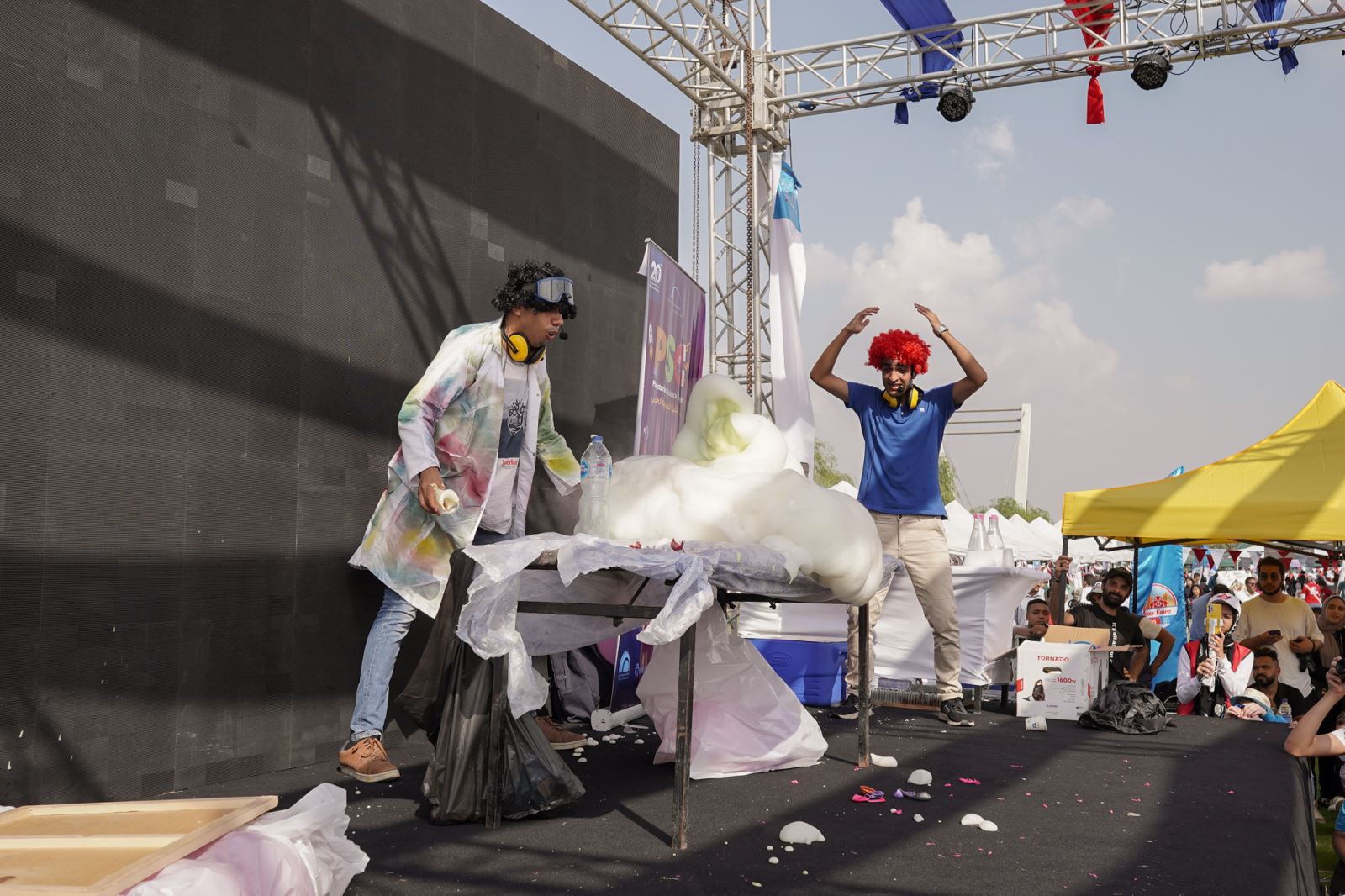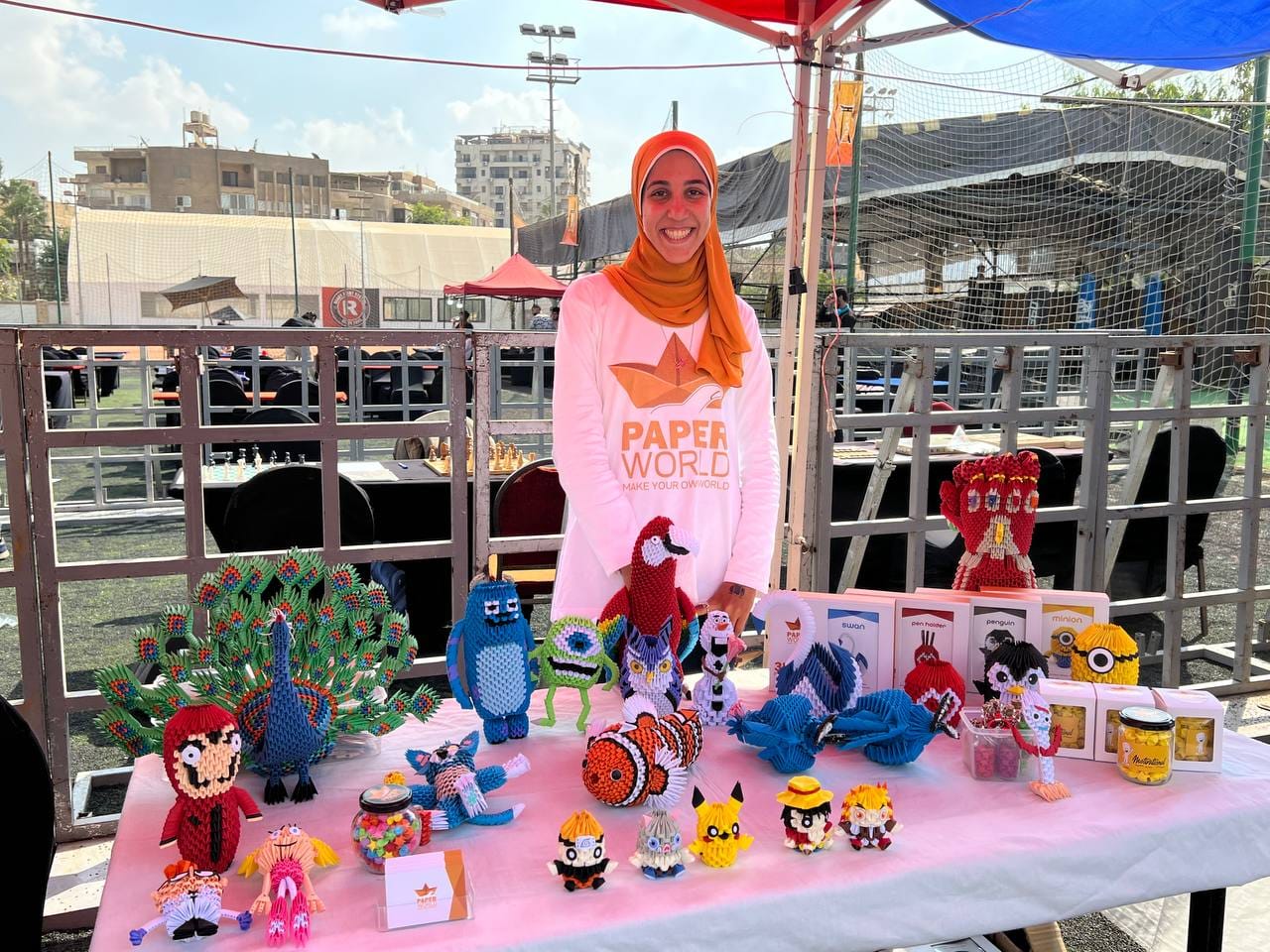Younger me wanted to get a swing, but I never did. At first, this made me sad; then, I thought of making my own swing. I tied my mom’s scarf to two adjacent armchairs and I was delighted with the first low-fidelity prototype of a swing, although it led to damages in the armchairs, which my mom found to be unpleasant! Everyone has a similar story and has once created something; it is not new for humans to innovate solutions and open new paths and share them with others. We are all makers; we prepare breakfast or fix something broken. This is how the culture of "Do It Yourself (DIY)" was born even before the coinage of the term. It has taken several forms and incorporated various crafts until the term "Maker Movement" appeared.
The "Maker Movement" began to take its current form in 2005, when Dale Dougherty and his team coined the term "Maker" to bring together all those who create and produce—whatever their craft is. They founded Make magazine and the "Maker Faire" to be a festival for all makers around the world. This event has been held in Cairo, Egypt, since 2015, under the title "Maker Faire Cairo", to celebrate this culture in an atmosphere full of fun and activities in technology, science, and art.
 Part of the Bibliotheca Alexandrina Planetarium Science Center (PSC) participation in the Maker Faire Cairo. Source: Facebook
Part of the Bibliotheca Alexandrina Planetarium Science Center (PSC) participation in the Maker Faire Cairo. Source: Facebook
One of the usual Faire's participants since 2019 is Ms. Rawan Sorour. She says: "Since childhood, I have been passionate about painting and handcrafting. In the first secondary grade, I wanted to create a car using easily found material;" after a diligent research, she found what she was looking for in paper. Rawan began her exploration of paper in 2016 and became known as the "Paper Maniac" or the "Origami Artist"; she is the founder of "Paper World".

Ms. Rawan Sorour, Paper World. Source: Facebook
Mr. Michael Henry, maker and founder of Woodei, also says: "I have been dreaming about this for so long, ever since I saw on TV the carving of a wooden piece using a knife to make a whistle. Since then, I have become increasingly attached to woodwork". During the social isolation period imposed by the COVID-19 pandemic, Michael wanted to realize his dream and began carving out primitive objects. Diving deeper into his work and receiving encouragement from people, he has used the appropriate tools and his skills evolved. He has been able to add movements and automata to his sculptures.
“You make my heart fly” - Padauk & Brass Automaton by Woodei - Michael Henry
A New Angle
The maker movement spread to keep pace with the developments of the Fourth Industrial Revolution—a range of interrelated innovations that causes a radical change in the society. The First Industrial Revolution began at the end of the eighteenth century, when humans switched to coal. Then, the world moved into the Second Industrial Revolution as humans became able to fly with planes and race with cars thanks to the discovery of the incredible power of electricity. The Third Industrial Revolution then came with the creation of computers and machinery automation. Now, we are in the aftermath of the Fourth Industrial Revolution brought by the Internet of Things (IoT) and self-driving cars. These leaps necessitate change, transformation, and incorporation of new ideas into education to discover innovative solutions and methods.

Credit: Christoph Roser/AllAboutLean.com
Professor Omar Al-Safty, General Manager of "San3a Tech", says: "The Maker Movement was regarded in the past as a luxury, but now it is essential in everyone's life. We need to be producers rather than consumers to help our society;" not to mention this movement improves mental health according to recent studies. The first impact of this movement on higher education was the creation of the Fab Lab—a free space for creativity and a short for the term Digital Fabrication Laboratory—at the Massachusetts Institute of Technology (MIT), and its expansion into a global network.
Ms. Lamia Nael, Director of the Educational Programs at San3a Tech, explains the idea saying: "Imagine that you have an idea to stop your room's door from slamming shut due to a heavy air stream. An engineer can make a manual design and take it to a factory; however, factories do not manufacture single copies of products. Even if you are not an engineer, rather than going to a factory, you can go to a place to manufacture your idea, even if you are not an expert in handcrafts. You just need to learn simple skills, and how to handle digital machines, such as the laser cutting machine; this magical place is the 'Fab Lab'".
Maker Movement: It’s about creating rather than consuming - The Feed
Handcrafts vs. Digital Machines
Not only has higher education benefited from the Maker Movement as it relies on Expeditionary Learning (EL), but it is also gradually integrated in pre-university education. Michael Henry adds: "Thanks to the makers community, I have learned the tools of digital fabrication; I can now download from the internet a gear design and 3D print it instead of creating it over several days. This has led to more creativity space; yet, I still have an internal conflict about it".
I shared with Lamia stories about our grandmothers, who used to make candy molds and learn to sew. It occurred to me that, in the future, we will be the artisan grandparents, holding a 3D printer in one hand, and a needle, a paper, or a saw in the other.
References
sciencemuseum.org.uk
unesdoc.unesco.org
weforum.org
researchgate.net
fabfoundation.org
link.springer.com
sparkfuneducation.com
batjo.eu
Cover Image by Freepik